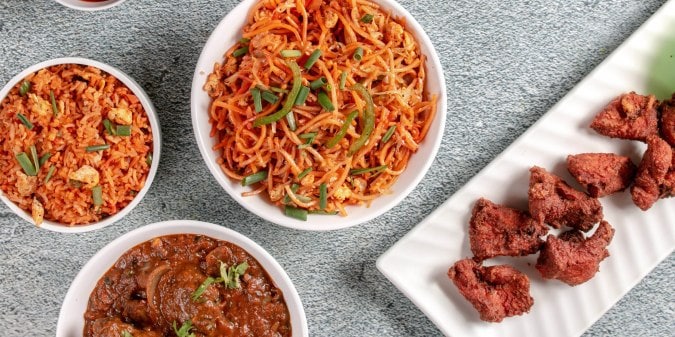Dhal-icious
Makes 3 cups (750 mL)
Dhal is the Indian word for beans, peas, and lentils and the dishes made from them. In this recipe, the popped mustard seeds and the other Indian spices when cooked release their fragrant oils and acids to create a rich and appetizing dish. Although the dhal is ready to eat when the lentils or mung beans are soft—after about 60 minutes of cooking—the best flavour is achieved by simmering on very low heat for 2 hours, adding water if necessary.
2 tablespoons (30 mL) coconut or olive oil
1 teaspoon (5 mL) mustard seeds
1/2 onion, diced
1 clove garlic, minced
1 tablespoon (15 mL) minced ginger
1 teaspoon (5 mL) curry powder
1 teaspoon (5 mL) garam masala
1 cup (250 mL) dried lentils or mung beans, picked over and rinsed
3 cups (750 mL) water
1/2 teaspoon (2 mL) salt
1/4 teaspoon (1 mL) black pepper
1 tablespoon (15 mL) lemon juice
Heat the oil in a large pot over medium heat. Add mustard seeds, cover, and cook for 1 to 2 minutes or until seeds start to pop. Add onion, garlic, and ginger and cook until the onion is translucent. Stir in curry powder and garam masala and cook for 1 to 2 minutes, stirring frequently to avoid scorching. Add lentils and water; bring to a boil, reduce heat, cover, and simmer for 60 minutes. Add salt, pepper, and lemon juice and adjust seasoning.
Per cup (250 mL): calories: 341, protein: 20 g, fat: 11 g, carbohydrate: 45 g (5 g from sugar), dietary fibre: 9 g, calcium: 73 mg, iron: 8 mg, magnesium: 92 mg, phosphorus: 340 mg, potassium: 732 mg, sodium: 330 mg, zinc: 3 mg, thiamin: 0.4 mg, riboflavin: 0.2 mg, niacin: 5 mg, vitamin B6: 0.5 mg, folate: 304 mcg, pantothenic acid: 1.3 mg, vitamin B12: 0 mcg, vitamin A: 2 mcg, vitamin C: 9 mg, vitamin E: 2 mg, omega-6 fatty acids: 1 g, omega-3 fatty acids: 0.2 g
Percentage of calories from protein 23%, fat 27%, carbohydrate 50%








